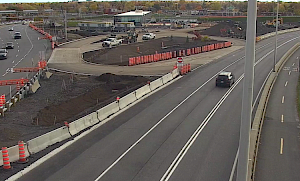Sound levels
The deconstruction work may also generate noise. The main goals of the noise management and monitoring plan are to:
- anticipate noise levels caused by upcoming work and plan the appropriate mitigation measures.
- measure the level of noise caused by critical work and the level of noise perceived in surrounding sensitive areas.
- compare the noise level to the performance limits established as per environmental requirements.
Identification of activities likely to generate significant noise
A noise management plan makes it possible to determine the site activities that will require noise monitoring on the site. This plan makes it possible to detail the site activities for the coming months. Subsequently, the noise for each activity is estimated taking into account several parameters: equipment, work methods and distance from sensitive areas. Thus, specialists are able to identify critical activities that require sound monitoring, that is, activities whose estimated noise is approaching 5 dBA or less than authorized limit.
Real-time monitoring
During an activity that is likely to generate significant noise or after a citizen complaint is received, noise readings are then taken for the duration of the activity.
The following limits must not be exceeded:
- between 7:00 a.m. and 7:00 p.m.: The noise level must not exceed 75 dBA for ambient noise and 85 dBA or 90 dBA for impact noise.
- between 7:00 p.m. and 11:00 p.m.: Noise limits are set at 5 dBA above the reference level* for ambient noise and at 85 dBA for impact noise.
- between 11:00 p.m. and 7:00 a.m.: Noise limits are set at 5 dBA above the reference level* (or more than 3 dBA if the reference level is above 70 dBA). Depending on the area, this limit varies between 56 dBA and 72 dBA.
*The reference level is the ambient noise level measured in sensitive areas before the start of the work. This level varies from 51 dBA to 67 dBA, depending on the area.
If the allowable limit is exceeded
If a reading is higher than the permitted limit, actions such as stopping the work and implementing additional mitigation measures will be taken before the work can continue.
When the work resumes, sound levels will continue to be checked to make sure they are below the allowable limit.
Identification of noise-sensitive areas
Residential areas near the work site were identified in the Targeted Environmental Analysis (TEA). For the current work, noise monitoring is being carried out during activities that are likely to generate significant noise in six areas have been identified as noise sensitive.
The speaker icons on the maps are the sites where the reference level* has been measured in each of the sensitive areas.
*The reference level is the ambient noise level measured in sensitive areas before the start of the work. This level varies from 51 dBA to 67 dBA, depending on the area.


